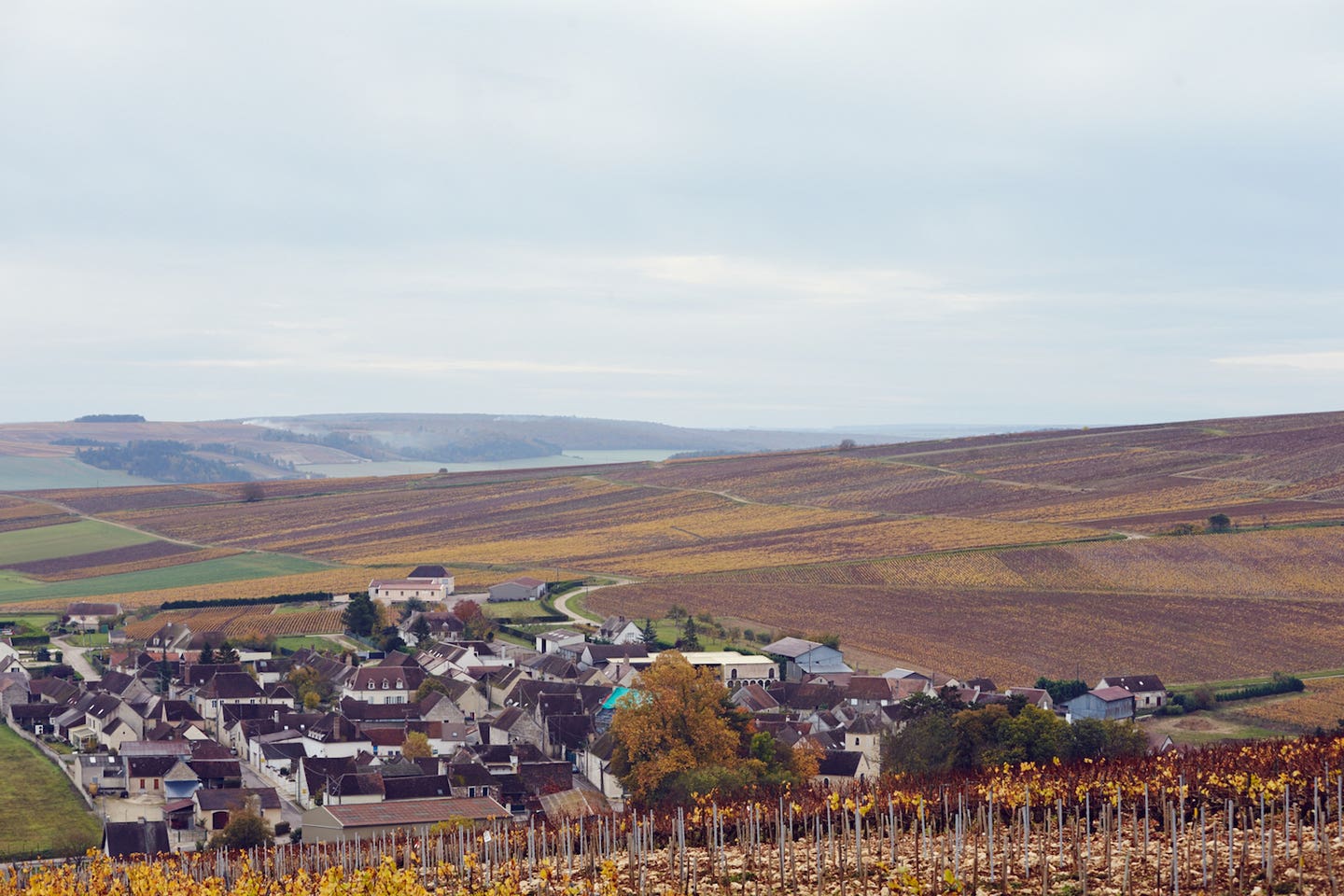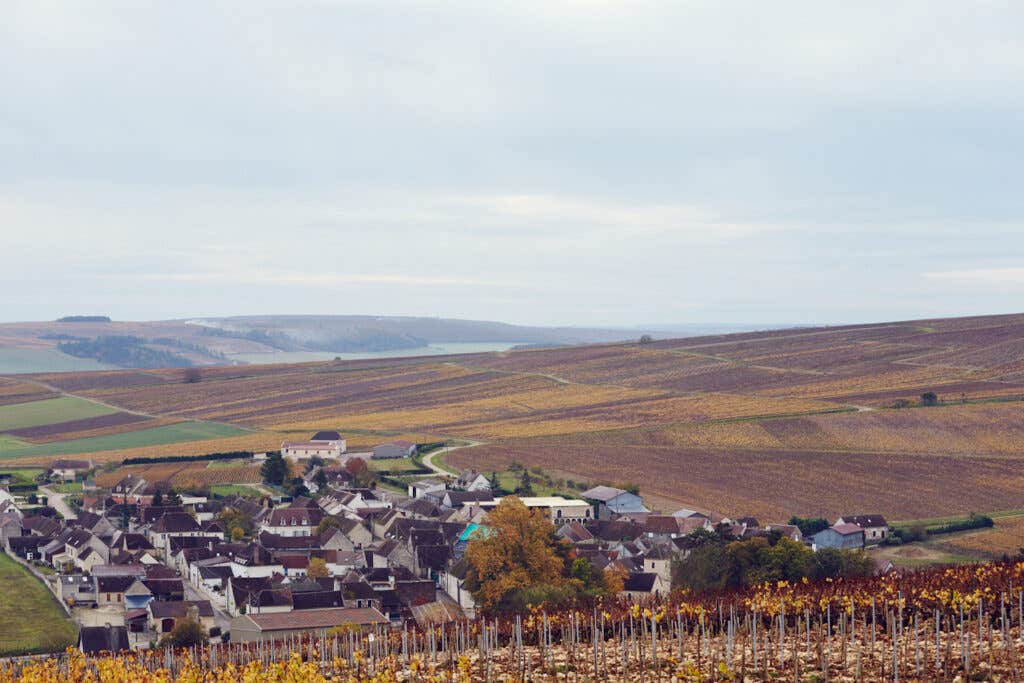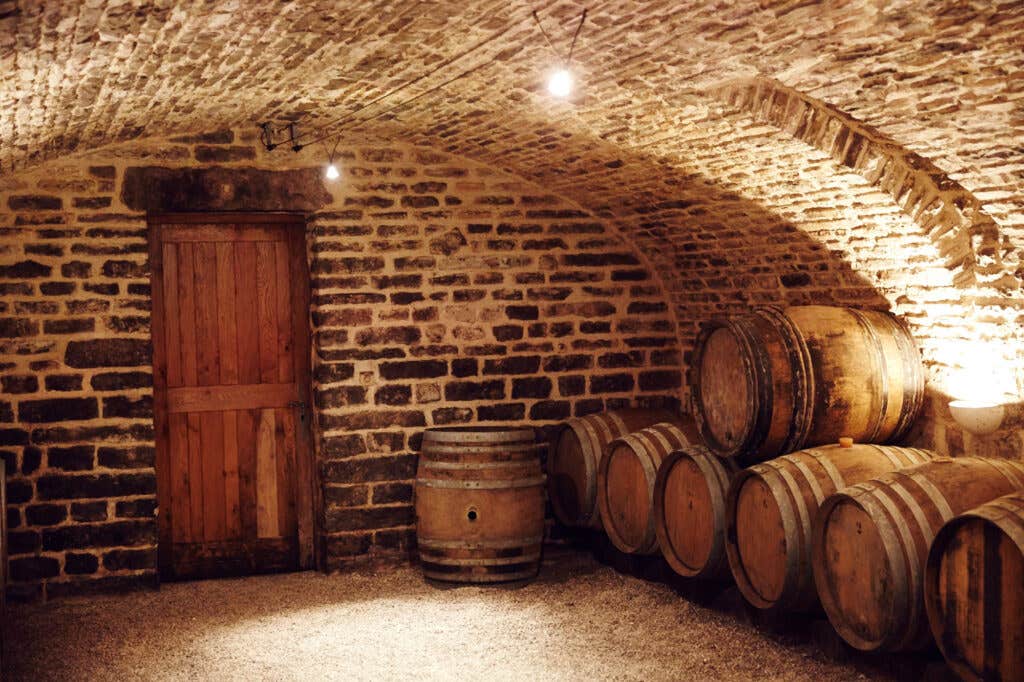
Adam Gollner really, really loves chablis. So much so that he traveled to the northernmost vineyards in Burgundy to drink the crisp, bonier-than-bone-dry wine at its source and discover what the people of Chablis eat alongside their town’s greatest pride.
To get a bit more backstory and learn more about the basics of chablis, we chatted with Gollner about his trip and his affection for this particular wine.

Why did you want to travel to Chablis?
I love drinking chablis. I know that it's an amazing pairing with oysters, but I drink it more often than I eat oysters, so I was wondering if there's other food that's great with it—that's a part of it. But mainly I just love Chablis.
How would you explain chablis to someone who had never tried it before?
Chablis is the quintessential dry white wine. When I first tasted it 10 or 15 years ago, I remember thinking it tasted like electricity—it's so vibrant, so vital, so filled with this sort of tension. I didn't know any wine words at the time, but that's still the way I think about it.
Another word that people talk about when you go to the store and you want to get a good 15 dollar bottle of wine—people say, “what do you have that has a lot of minerality?” If you’ve never had a chablis, when you taste it you will understand what that is. It is textbook minerality. And if you have had a wine that is mineral and you like that kind of stony, cold, dry aspect, well, then you can just try different chablis.
There’s this Platonic ideal of chablis that every winemaker is trying to attain. They’re all trying to make the same wine. Winemaking has been happening for so many centuries there, and there’s this [specific] idea of what chablis is supposed to be like.
It's a green wine—it’s almost underripe, high in acidity, very fresh. Any chablis that you try today is going after that goal of pure, elegant wine. I think it’s the crispest, most mineral dry white wine out there.

You met—and drank, and ate—with a number of family winemakers. How did you organize these visits?
I worked through importers that I buy wines from, as well as the Bureau Interprofessionnel des Vins de Bourgogne and Sopexa. It was a challenging article to organize; it isn't easy to see the vineyards we mentioned.
So where can we laypeople go if we want to visit Chablis?
These places have tasting rooms open to the public:
Chablis-Savary
Brocard
Domaine d'Henri
William Febre
La Chablisienne
Domaine Roland Laventureux
A side note from wine distributor and natural wine evangelist Kermit Lynch: "While they might not be Napa Valley-style tourist tasting rooms, anyone can knock on the door of these family wineries and ask to taste, fer chrissake. No buses allowed, however."
For those traveling to Chablis, are there any other spots along the way you recommend visiting?
If you're gonna make the journey out there, an essential stop for any wine lover is the Auberge du Pot d'Etain. You can go spend the night there; it's this place where all the winemakers go to try wines by the other winemakers of Burgundy. All the winemakers sell their wines to [the owner] at a low price, and all the other winemakers go to try those wines. Its wine list is made up of the rarest and most special wines of Burgundy.
It's a real insider place, and a real must-visit, and it's got this endless cellar full of rarities—not just chablis, but [wines from] all of Burgundy. For any person that's making the pilgrimage to Chablis, it's required to pillage the cellar. Wines that would cost $1,000 in New York are there for $100. It's astonishing. You can almost justify your plane ticket over there.
If I want to get to know chablis wines, where should I start?
Basic village-level chablis is great—you don't need to drink the premier cru stuff to appreciate chablis. Try the chablis by Laurent Tribut. To me it's one of the great wines of the world. It's a real honest, delicious thing that feels like it isn't different from what an amazing chablis would have been 100 years ago. It's handmade by an artisan who works around the clock and is sincere about what he does and is a real farmer; there's nothing industrial about it. He has a tractor.
What about petit chablis? What's the difference?
Petit chablis is grown on higher elevations, where the soil composition is slightly different from the more complex, striated soils of the regular chablis vineyards...I love a good petit chablis, though—it can be just as great as any other chablis. It's a great source for value and would answer your question about a good introduction: Petit chablis is almost always under $20 a bottle. In fact, petit chablis is probably the only reliable source of under $20 quality Burgundy that exists.
And if you haven’t done so already, try a chablis with oysters. Start there.
Keep Reading
Continue to Next Story










